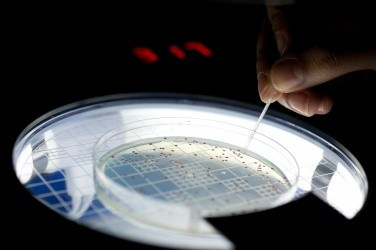Ancient Life Re-evolved: 500 Million Year Old Gene Put in Modern Organism to Track Evolution

Scientists at Georgia Institute of Technology are following a resurrection method to evolve life from a 500 million year old bacterial gene.
Using a process called paleo-experimental evolution, the scientists have put the ancient gene into modern-day Escherichia coli (E coli) bacteria, which has been growing, Georgia Institute of Technology said in a statement on Wednesday.
The procedure will help researchers to observe and track any changes in the evolution.
"The ability to observe an ancient gene in a modern organism as it evolves within a modern cell allows us to see whether the evolutionary trajectory once taken will repeat itself or whether a life will adapt following a different path," said scientist Betül Kaçar, a Nasa astrobiology postdoctoral fellow in Georgia Tech's Nasa Center for Ribosomal Origins and Evolution.
"This is as close as we can get to rewinding and replaying the molecular tape of life."
After inserting the ancient gene into modern bacteria, scientists observed some palpable differences in bacterial growth. Though the new bacteria comprising both modern and ancient genes survived, they showed comparatively slower growth initially than the bacteria with only modern genes.
"The altered organism wasn't as healthy or fit as its modern-day version, at least initially," Associate Professor of Biology Eric Gaucher said.
However, Gaucher said that the growth rate of bacteria increased gradually and after first 500 generations, they had the microorganisms healthier than their modern counterparts. Mutations of a protein in the ancient gene were responsible for the better fitness levels, according to researchers.
"We think that this process will allow us to address several longstanding questions in evolutionary and molecular biology. Among them, we want to know if an organism's history limits its future and if evolution always leads to a single, defined point or whether evolution has multiple solutions to a given problem," said Kaçar.
© Copyright IBTimes 2025. All rights reserved.





















